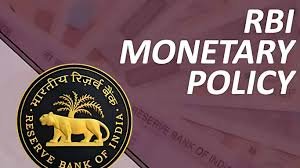Withdrawal of ₹2000 Notes: RBI Reports 98% Returned
The Reserve Bank of India (RBI) recently reported that approximately 98% of the ₹2000 notes that were in circulation have been returned to its vaults following the withdrawal announcement made in May 2023. This significant development underscores the effectiveness of the withdrawal strategy aimed at promoting a cashless economy and curbing black money circulation. The decision to withdraw these high-denomination notes was primarily driven by concerns over their use in illegal activities and to facilitate the transition towards digital transactions.
Impacts on the Economy
The withdrawal of ₹2000 notes has had a profound impact on the Indian economy. As a part of the demonetization strategy, it aims to encourage the public to adopt digital payment methods, thereby reducing dependency on cash. The RBI’s move has also facilitated a healthier financial ecosystem, promoting transparency and accountability in financial transactions. The fact that such a high percentage of notes have been returned indicates the acceptance of this policy among the populace and highlights the public’s readiness to adapt to a changing economic landscape.
The Response from the Public
Since the announcement of the withdrawal, banks across the country have reported a significant surge in deposit activities. People have been encouraged to deposit their ₹2000 notes into their accounts or exchange them for smaller denominations. This increased activity has led to a more substantial inflow of funds into the banking system, enhancing liquidity and making more resources available for lending purposes.
Digital Transition
The withdrawal is seen as a crucial step towards India’s digital transition. The RBI and the government are promoting digital payment solutions to make transactions more accessible and secure. With an increased emphasis on technology-driven payments, the aim is to reduce the informal economy and improve overall tax compliance.
Future Implications
Looking ahead, the withdrawal of ₹2000 notes could set a precedent for future currency policies in India. It signifies a shift towards a more regulated and transparent financial system, aiming to enhance the overall efficiency of the economy. As the country moves forward, it will be crucial to monitor the long-term impacts of this decision and how it shapes the future of banking and financial transactions in India.

Why This News is Important
Promoting Cashless Transactions
The withdrawal of ₹2000 notes is a strategic move by the RBI to promote cashless transactions. By encouraging people to use digital payment methods, the government aims to create a more efficient and transparent economy.
Curbing Black Money
This initiative also addresses the issue of black money circulation. By removing high-denomination notes from circulation, the RBI is making it more challenging for individuals to hoard unaccounted wealth, thus promoting a more honest financial environment.
Strengthening the Banking System
The influx of returned notes has strengthened the banking system. With increased deposits, banks can extend more loans, ultimately contributing to economic growth and stability.
Public Response and Adaptation
The public’s readiness to adapt to this change is noteworthy. The high percentage of returned notes indicates a willingness to embrace new banking norms and digital transactions, paving the way for a more tech-savvy society.
Economic Transparency
This move contributes to enhancing economic transparency. By reducing cash transactions, the government aims to improve tax compliance, ultimately benefiting public finances and welfare programs.
Historical Context
The withdrawal of ₹2000 notes is not an isolated event but part of a broader strategy initiated by the Indian government to regulate currency and combat black money. In November 2016, the government demonetized ₹500 and ₹1000 notes, which marked a significant turning point in India’s economic policy. This earlier move aimed to curb the unaccounted wealth and corruption prevalent in the economy. The introduction of the ₹2000 note was seen as a temporary measure to address liquidity issues, but the subsequent withdrawal highlights the government’s commitment to promoting a cashless economy and enhancing financial transparency.
The recent actions also align with global trends towards digital payments, with countries around the world increasingly adopting cashless transactions to streamline their economies. The RBI’s proactive approach indicates a concerted effort to modernize India’s financial infrastructure and ensure sustainable economic growth.
Key Takeaways from “Withdrawal of ₹2000 Notes”
| S.No | Key Takeaway |
|---|---|
| 1 | Approximately 98% of ₹2000 notes have been returned. |
| 2 | The withdrawal aims to promote cashless transactions. |
| 3 | It seeks to curb black money circulation in India. |
| 4 | Increased deposits strengthen the banking system. |
| 5 | This move enhances economic transparency and compliance. |
Important FAQs for Students from this News
1. Why did the RBI decide to withdraw the ₹2000 notes?
The RBI withdrew the ₹2000 notes to promote a cashless economy, curb black money circulation, and enhance the overall transparency of financial transactions.
2. What percentage of ₹2000 notes has been returned to the RBI?
Approximately 98% of the ₹2000 notes that were in circulation have been returned to the RBI’s vaults following the withdrawal announcement.
3. How can people exchange their ₹2000 notes?
People can deposit their ₹2000 notes into their bank accounts or exchange them for smaller denominations at designated bank branches.
4. What are the implications of this withdrawal for digital transactions?
The withdrawal encourages the adoption of digital payment methods, thereby promoting a more efficient and transparent economy and reducing dependency on cash.
5. How does this move relate to the previous demonetization in India?
The withdrawal of ₹2000 notes is part of a broader strategy initiated by the Indian government to regulate currency, combat black money, and modernize the banking system, following the demonetization of ₹500 and ₹1000 notes in 2016.
Some Important Current Affairs Links














